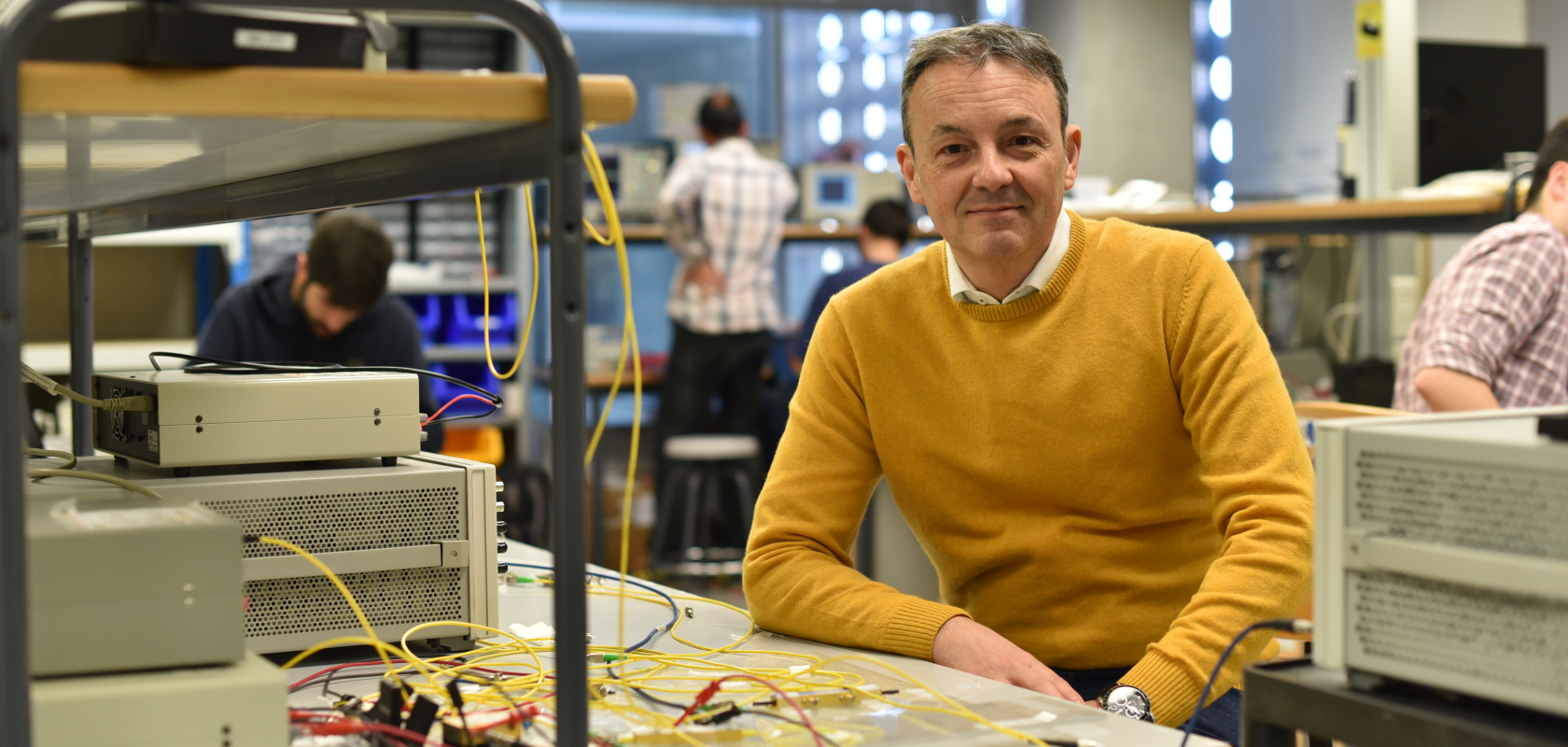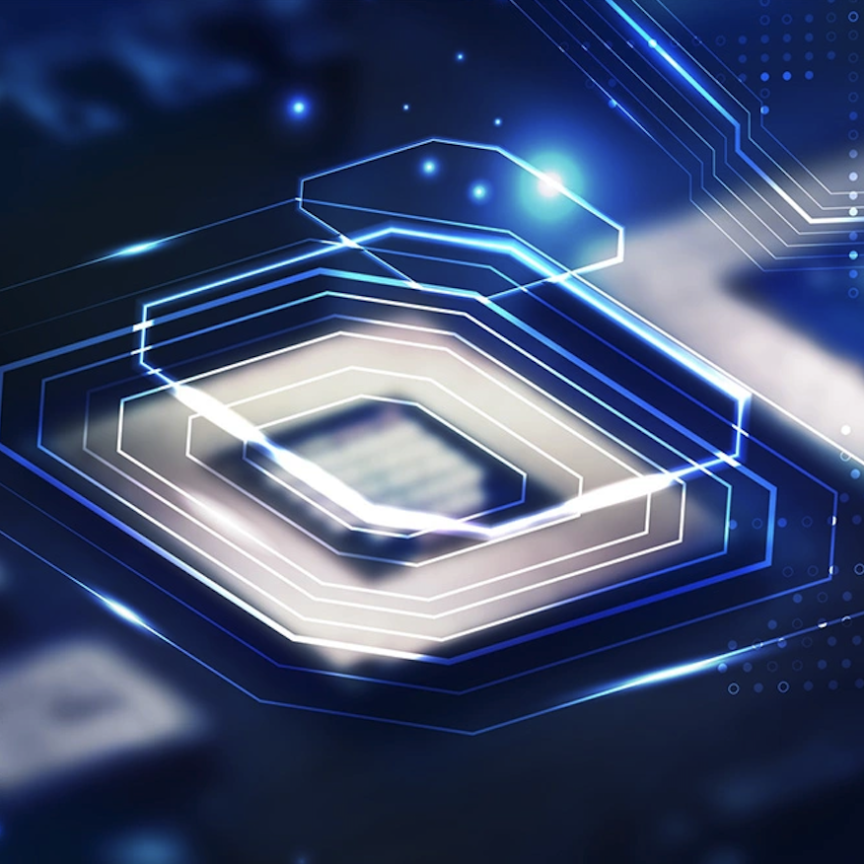Following iPronics’ securing of €3.7M funding to bring its software-reconfigurable photonic processors to market, we ask co-founders Jose Capmany and Daniel Perez-Lopez how the technology could influence photonic computing
EO: Congratulations on securing the funding! So how far into development are you?
Jose Capmany, COO: Thank you! So right now we are developing the first version of the processor and are conducting beta testing programmes with several customers that have shown interest in our prototype. They operate in different areas and will provide valuable feedback at this stage. As testing progresses we’ll be using the feedback to upgrade the processor in parallel.
The general idea is to bring the first version to market over the next six months, for the beginning of 2023.
Daniel Perez-Lopez, CTO: As Jose said, we've already received interest from several clients and are now upgrading some of the systems and performing final integrations in accordance with the beta testing feedback. The new funding will enable us to expand our engineering and product development teams, and we have also recently moved to new facilities to facilitate this growth as well.
EO: In which areas is the technology being beta tested? What does this entail?
Daniel: For the first stage the clients start with a unique simulator that enables them to test the capabilities of our programmable photonics processor without actually having a physical version in their lab. The second stage involves them experimenting remotely with a physical processor in our own lab via the cloud, and then the final stage involves them testing an actual physical prototype.
We have clients across various stages of the testing, putting our technology to work in a wide range of applications. While we cannot comment on the specific details due to confidentiality agreements, what we can say is that these applications include 5G/6G signal processing, dynamic configuration of optical/RF photonic filters, and programmable beamforming for lidar.
We also have clients looking to perform neuromorphic computing with our device. Some of these are developing reservoir computing – a specific kind of computation that can be done in the optical domain. This is another key differentiation of our device compared to the others that are simultaneously trying to reach the market: ours is better suited to this type of computing.
EO: Do you see photonics superseding electronics in computing, or perhaps instead the two working in tandem?
Jose: From the very beginning we’ve advocated that this technology will never be a competitor seeking to replace electronic computing, but rather complement it.
The idea is to develop and exploit photonics across the areas in which it excels. The technology brings a lot of advantages to computing, especially in intermediate processing for linear operations. It excels at broadband, fast computation, something electronics is not as well suited for. However, there will be areas of computing better left to electronics, which is why we advocate that these technologies are complementary to each other. We see future systems in hybrid configurations where information continuously swaps between electronics and photonics as and when it's needed, taking advantage of both technologies.
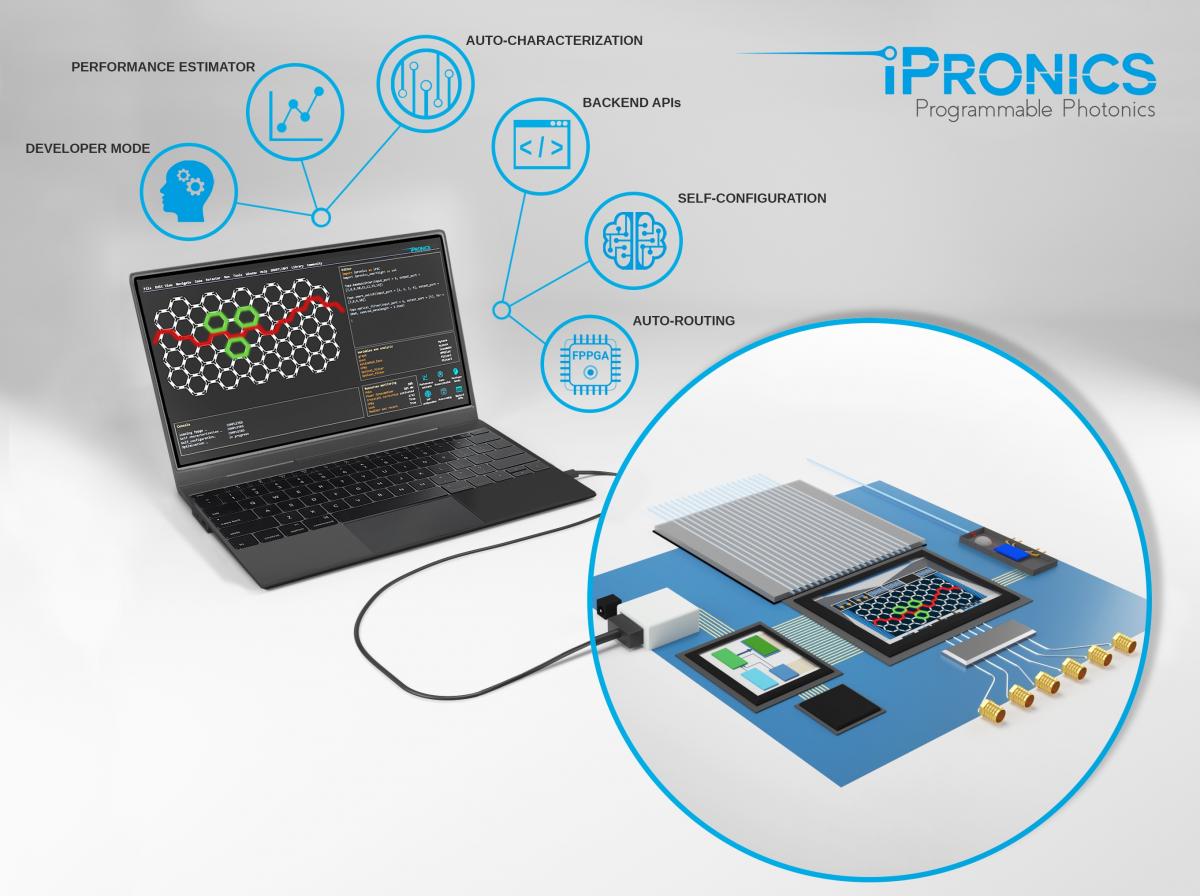
Schematic of a software-reconfigurable programmable photonic processor developed by iPronics. (Image: iPronics)
Daniel: Photonics offers extremely low latency processing due to computations being performed at the speed of light. It also offers reduced power consumption.
It’s not all perfect, however. There are some bottlenecks of photonic computing that need to be considered, which from what we’ve seen among the many companies and research institutes appearing in this field, is not something that everyone typically acknowledges. For example, if your computation employs optoelectronic and electro-optic transformations, this comes with speed limitations, latencies and added system complexity.
Daniel: Current photonic integrated circuits are all application-specific, which leads to limited operation, long time to market and high fabrication costs. Combined these are a real handicap to move photonic integrated circuits beyond the data centre and transceiver applications we’ve seen so far. So by adding programmability to these devices for the first time, we’re providing a common hardware platform that can be adapted for a wide range of applications. This will be particularly useful for 5G and 6G protocols, which are continuously changing. If the time they take to change is faster than the time it takes to develop and produce a photonic integrated circuit, it’s going to be impossible to meet the requirements and match that in time.
In addition, until now working with photonic integrated circuits has required thorough background knowledge on photonic integrated design – knowing the development requirements, the foundries and the best packages in the world – so there’s been a huge knowledge barrier. So by putting in a software layer that allows an engineer with no background in photonics to just write a line of code and program an optical interconnect, optical filter, phase shifter or beam splitter, for example, we’re facilitating considerable democratisation of this technology.
Jose: A reconfigurable processor will also add value across the photonics supply chain as it will ultimately enable faster design, packaging and prototyping, as well as faster confirmation that a design is ready to be sent to the foundry. This is very much what happened with FPGAs in electronics – they've been used as a design tool for circuits to great success and have brought a range of benefits to the electronics supply chain.
EO: What platform are your processors built on?
Daniel: This technology is based on silicon photonics. We as both a company and individuals have years of experience in this field, all having worked with silicon nitride and indium phosphide technologies over a wide range of different platforms and foundries. So we are aware of the benefits of every foundry and every technology platform, which we’ve incorporated into our product – it's a mixture of a lot of foundries and technologies.
One of the key aspects we’ve achieved is making the processor producible using standard fabrication processes. We can use different partners all around the world: small, large, Tier-1 and primetime foundries, which allows us to be flexible while achieving reproducibility across our platforms.
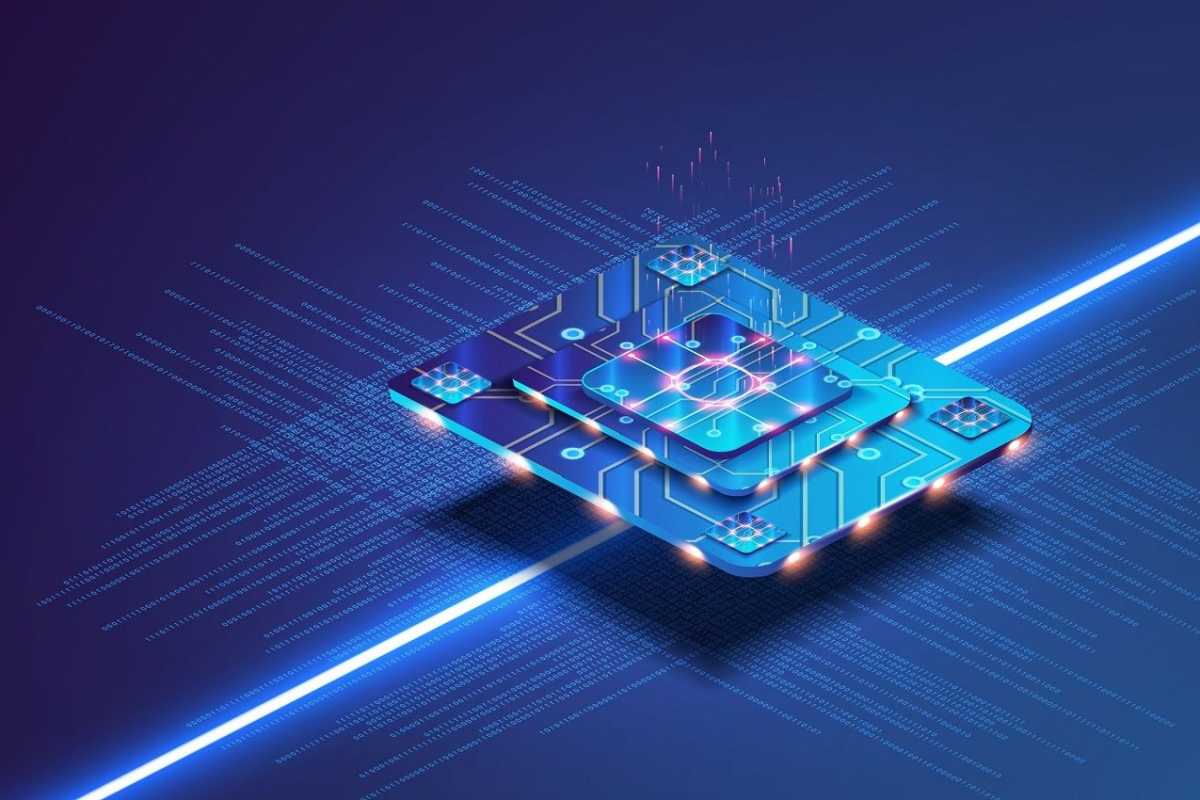
Photonic chips offer lower latency, lower power consumption and higher bandwidth than electronic chips. (Image: iPronics)
Jose: Silicon is going to be the base of most photonic integrated circuits. It might be complemented with other active technologies – there's a lot of work right now going on trying to do efficient hybrid integration by transfer printing, for example – but we believe that around 90 or 95 per cent of the chips will be silicon. So yes, silicon is and is going to continue being our choice of platform.
EO: What improvements can still be made to this technology?
Daniel: Currently we have a larger form factor compared to application-specific photonic circuits, however we’re putting all our efforts into addressing this. We also have higher overall power consumption compared to application-specific circuits, but are dramatically bringing this down – having been able to reduce it by more than two orders of magnitude over the past two years.
In addition, while the reconfiguration times we are currently working with are in the millisecond regime, the next step is to jump into the microsecond regime. This will grant the ability to serve an expanded range of applications that require even faster reconfiguration times.
So overall we will be addressing each of the performance gaps we have in the short-mid term.
EO: How does photonic computing compare with quantum computing?
Daniel: Photonic computing and quantum computing are two different technologies that – as is the case between photonics and electronics – target different types of computation.
Quantum computing is currently focused on the application of quantum-compatible hardware and algorithms to demonstrate combinatorial arithmetic applications beyond quantum system simulations. On the other side, photonic computing can directly map matrix multiplications and signal processing employing optical and electro-optical blocks. This is specially suited for paralellisation, and low-latency tasks.
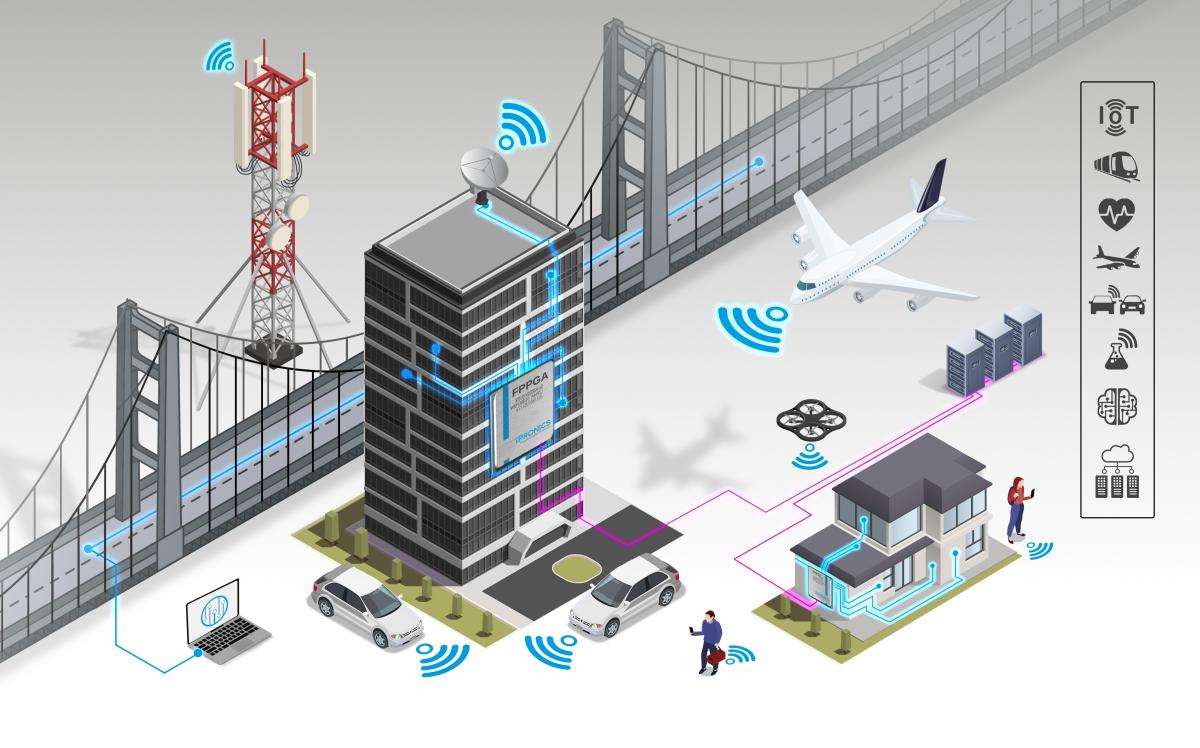
Application fields for programmable photonic chips: from smart cities to fast RF and optical signal processing and computing. (Image: iPronics)
As is the case with quantum computing, photonic computing still has a range of improvements that need to be made to fully prepare it for market application, however we believe these improvements will arrive to photonic computing in a shorter timeframe than quantum computing. In addition, photonic computing is much more readily deployable than quantum computing, as for quantum you need equipment such as cryogenic detectors and very specialised single photon sources, etc, whereas for photonic computing we just leverage classical technology.
EO: Can we expect to see photonic computing reach devices at the consumer level?
Jose: Photonic computing could certainly work well in consumer devices wielding other photonics technologies, such as smartphones and smartwatches, where lidar and even spectrometry are now being integrated. It could also one day feature in laptops and PCs on some level, but for performing different types of computing than that done by modern CPUs.

